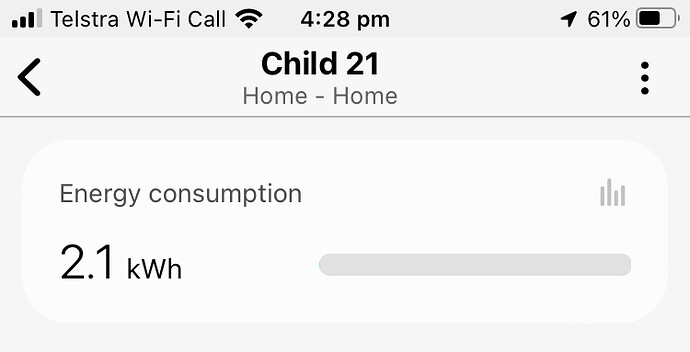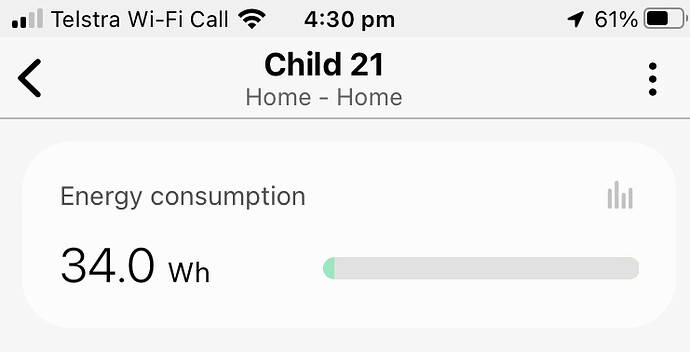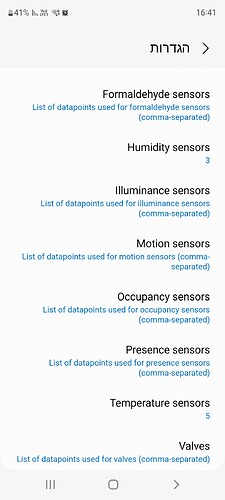@macazzlst…do you have a link to where I can purchase this zigbee garage door opener? I’ve been looking for one that’ll work with an Edge Driver.
Did you mean “Garage Door” profile ?
If so, then it is working for similarity with _TZE200_wfxuhoea which uses datapoints 1 and 3. Nice!
But if you really meant “Door Control” profile, then I would need the datapoints you used.
A screenshot would be welcoming.
@w35l3y - sorry, I was playing with this quite a bit and indeed I did use the Garage Door profile.

@Robbie.bushell - I suspect there will be many which work with this driver, but the one I got was: “Tuya Smart ZigBee Garage Door Opener Controller” https://a.aliexpress.com/_mLkY982.

I’d seen a number of people looking for edge drivers for various garage door openers, but since it seemed nobody had anything working I was going to buy one. Once I got the device in hand I was starting writing my own driver, until I found this thread!
That is probably because it was not paired with this driver.
At least the screenshot you sent is from another driver.
Make sure to select the driver “Personal Tuya Devices - main” from the Driver menu.
Added 4 more capabilities:
- currentMeasurement
- energyMeter
- powerMeter
- voltageMeasurement
Added 4 more devices: (I don’t have any of them to test by myself)
- TS0601 / _TZE200_2hf7x9n3
- TS0601 / _TZE200_go3tvswy
- TS0601 / _TZE200_v6ossqfy
- TS0601 / _TZE204_cjbofhxw
Energy meter works with TZE200_go3tvswy
![]()
Have you figured it out what those datapoints mean?
Is DP 23 for energy meter ?
Hi Wesley, it seems that datapoints 21 and 22 give me live readings of total power usage across the 3 gang switch although they do not seem to match - I’m not sure which one is correct.
Fan switch:
Heater switch:
Light switch:
Not sure what datapoints 20 and 23 do as they remain fairly static. Tried them in both Energy and Power meters but same result.
Ok, I think 21 is energy usage and 22 is current.
Maybe!
By default:
- currentMeasurement (current sensor) is divided by 1000
- energyMeter (energy meter) is divided by 1000
- powerMeter (power meter) is divided by 10
- voltageMeasurement (voltage sensor) is divided by 10
What is the raw data for these datapoints ?
I only have your first screenshot…
| DP | Value |
|---|---|
| 20 | 3 |
| 21 | 0 |
| 22 | 0 |
| 23 | 2449 |
What are their values when…
| Situation | Results |
|---|---|
| Everything is off | … |
| Switch 1 is on | … |
| Switch 2 is on | … |
| Switch 3 is on | … |
| Switch 1 and 2 are on | … |
| Switch 1 and 3 are on | … |
| Switch 2 and 3 are on | … |
What is their behaves ?
Do they increase over time ?
Do they stay static ?
Do they change values from time to time on a specific range ?
Do they seem completely random values ?
Hi Wesley,
I’ve spent some time investigating this and here’s my findings:
Values 22 is real-time Energy Meter (Wh) and Value 21 is real time Current Sensor (A) across the entire switch. Value varies dependant on which switches are active. Can clearly see the difference in power draw between LEDs, Fan and Heater. I did the W to A calculator to confirm which value is which.
Value 23 is the Voltage Sensor (V) as value is always around 240VAC, dropping slightly when switches are on.
Value 20 creeps up very slowly over time - possible total power consumed-Power Meter (W)?
The only one I’m not sure on is Value 20 as this shows as a total usage of 7W…not sure if that is correct value (W).
Hi there, thanks for your help, I have taken another look at trying to get the Tuya TRV valve to work - _TZE200_hue3yfsn
I think, but sure that you can correct me if I am wrong, that to make this work I would need to add the following capabilities.
- thermostatMode
- thermostatHeatingSetpoint
- thermostatOperatingState
Would I just add these to the capabilities of the normal-thermostat-v1.yaml file?
Sorry for what I am sure are daft questions, but trying to learn how it all works. And thanks again for your work on this project.
Thanks for the interest.
If you do this, it will affect every device that uses the same profile.
If only one device uses it, then it should be ok.
A good way to find it out is checking fingerprints.yaml
Also, you would need to add them to commands.lua so the driver could know what to do for each capability.
Finally, you would need to add them to the model file to let the driver know what is each datapoint.
There are some examples on how to add stock capabilities and new devices…
Basically, if you want to help developing it, this driver needs 3 things:
- Model file
- it correlates the datapoints of a certain device with “commands”
- Commands
- it handles each capability
- if the capabilities you need were defined, you just need to use them
- otherwise, it needs to be implemented.
- Profile
- it correlates the device with its capabilities
- if the profile already exists, you just need to use it
- otherwise, it needs to be implemented
Everything else needed is created with npm start
@w35l3y @OferDV I’ve got the soil sensor connected, it connected first time, although I’m at a loss how to use the driver correctly. I input some values, and 4 water sensor child devices were created, one of which correctly changes wet/dry when the sensor goes in water, so I can delete the other 3 child devices. How to get moisture percent?
Each datapoint has a meaning.
In your case, complementing what @OferDV said:
DP 3 = Humidity sensor
DP 5 = Temperature sensor
DP 14 = Battery state (0=low,1=medium,2=full) - it currently doesn’t exist in this driver.
DP 15 = Battery percent
So, you shouldn’t use water sensor, but the ones informed above.
Water sensor is used for detecting leaks.
I just didn’t understand how it created 3 generic sensors even though you added as water sensors.
I tested it here and 4 water sensors were created.
If you only need DP 3 (Humidity sensor), then only inform it.
Put some water in the sensor, and it should change “Connected” to something else like, for example, 83.0%.












